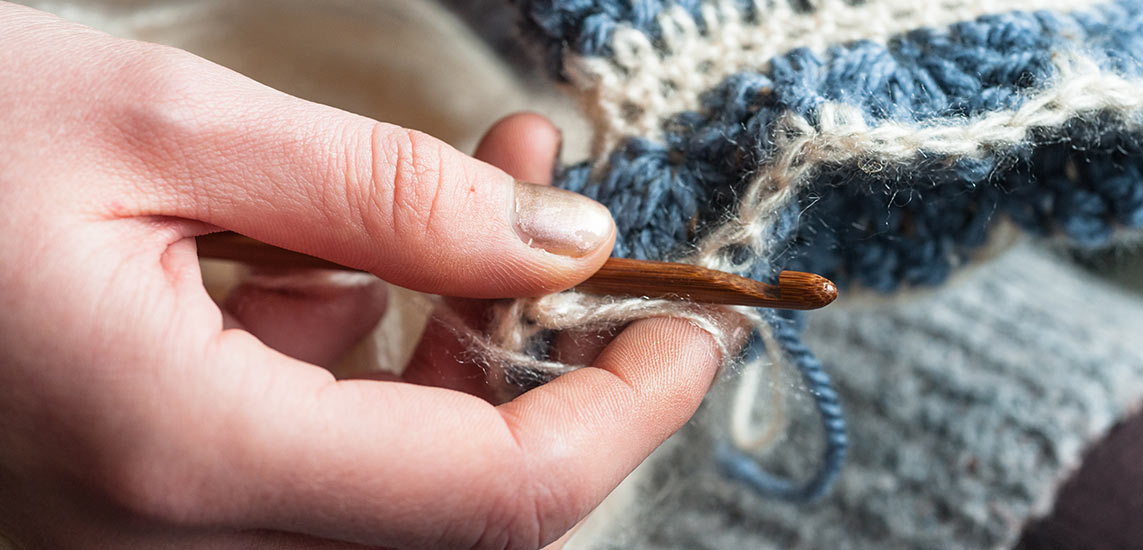Undoubtedly, crochet is more than just a skill for creating garments and adorable craft projects. Amidst the seemingly simple acts of yarnovers and pulling through loops, you have found a hobby that generates tangible outputs and weaves numerous benefits for the mind and well-being. Engaging, affordable, and accessible, crochet transcends age. This craft is for everyone, intertwining mental stimulation with emotional relaxation.
But how do you take the first steps to creating whimsical scarfs and glorious granny square sweaters you have dreamt of? Before crafting your first loop in crochet, it's crucial to smoothly navigate through the initial steps, which include selecting a crochet hook and finding its perfect partner - the right yarn. This essential pairing sets the stage for a harmonious dance of creation, guiding each stitch and pattern to life.
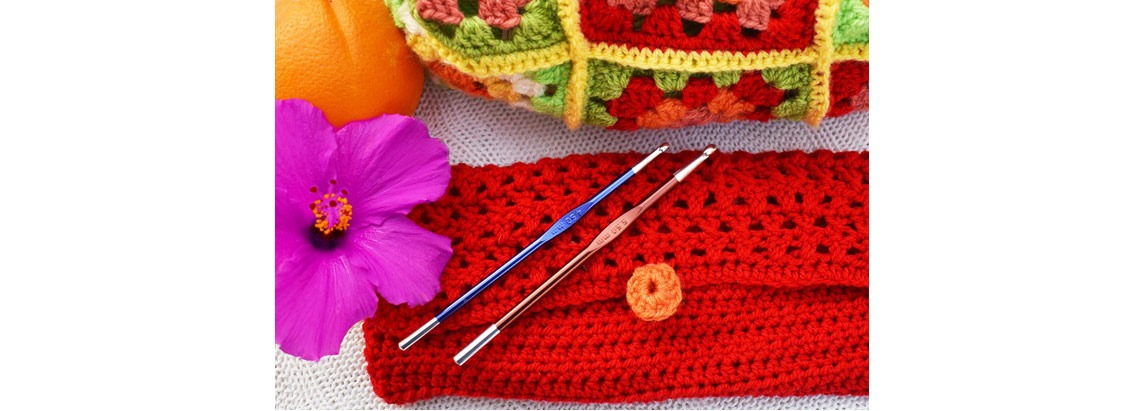
Choosing your Crochet Hook
If you're a beginner looking to delve into crocheting, selecting the right single-ended crochet hook for you is an essential first step. Much like a painter’s favored brush, a crochet hook should feel like a comfortable, natural extension of your hand. With time and practice, this humble tool will bridge your creative vision and the tangible art you create. Thus, investing the time to find a hook that fits comfortably in your grasp ensures ease in crafting and translating your artistic aspirations into your projects.
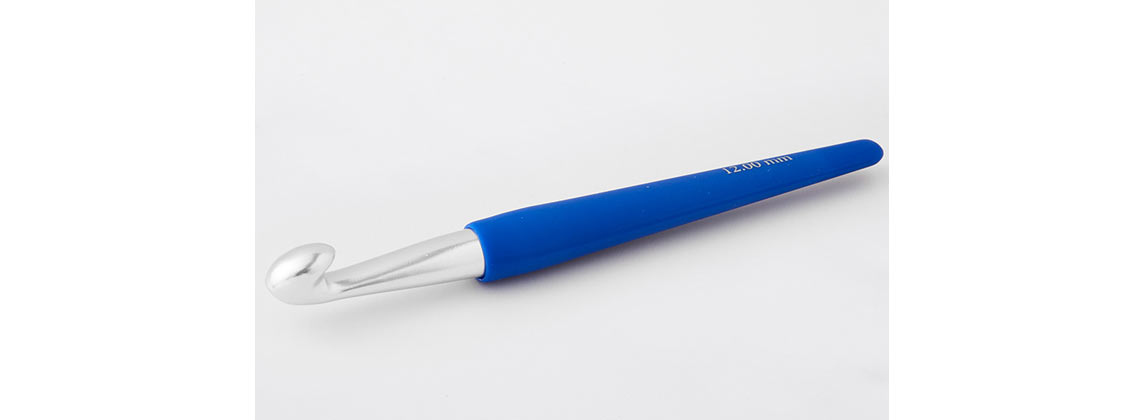
Hook Type: There are three types of crochet hooks. Single-ended hooks are the most common and typically what beginners start with. They have a single hook on one end and are used for most standard crochet stitches, like single and double crochets.
Double-ended crochet hooks feature a hook on each end of the tool and are especially useful for creating two-color reversible fabrics. In Tunisian crochet, they can be employed too for making items like blankets, scarves, and shawls, where a different color or texture is desired on each side of the work.
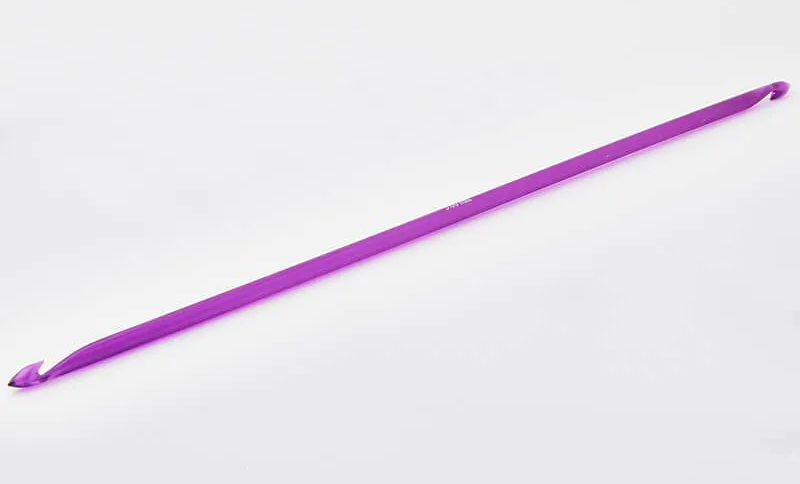
The Tunisian crochet hook is typically longer than regular crochet hooks, resembling a knitting needle, and may have a cord and a stopper at one end to prevent stitches from sliding off. These hooks can hold multiple stitches simultaneously, creating a fabric resembling a knitting and crocheting hybrid.
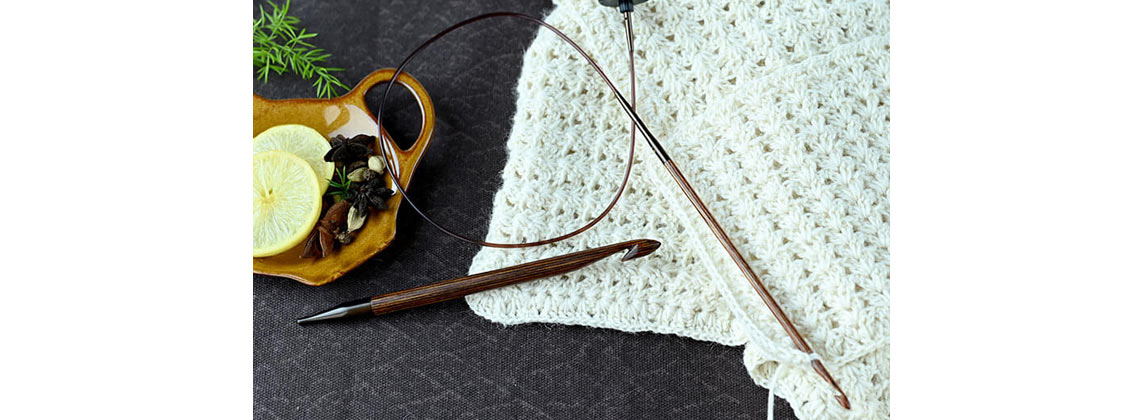
Material: Crochet hooks come in various materials, including aluminum, bamboo, and wood. A wooden or bamboo hook is often recommended for beginners because of its smooth surface, allowing for easy yarn sliding. You can later switch to an aluminum hook for increased speed. However, there are also slick wooden options, like our Symfonie and Ginger lines and, last but not least, our crown jewels: the Lantern Moon handcrafted hooks made from pure ebony hardwood.
Size: Crochet tools range from small-sized, thin hooks for delicate lacework to thicker hooks for bulkier yarns. As a beginner, working with medium-sized hooks is more manageable. Any size between 5 and 7 mm is versatile and comfortable for most hands, making the practice of consistent tension easier.
|
Corresponding Crochet Hook Size |
Metric diameter |
|
B/1 |
2.25 mm |
|
C/2 |
2.75 mm |
|
D/3 |
3.25 mm |
|
E/4 |
3.5 mm |
|
F/5 |
3.75 mm |
|
G/6 |
4 mm |
|
H/8 |
5 mm |
|
I/9 |
5.5 mm |
|
J/10 |
6 mm |
|
K/10.5 |
6.5 mm |
|
L/11 |
8 mm |
|
M/13 |
9 mm |
|
N/15 |
10 mm |
Handle: There are two main types of crocheters: pen-style and knife-style. Holding the crochet hook like a pen means that the handle rests against the palm's base, and the fingers are positioned like one would hold a pen or pencil. This grip provides precision and is ideal for intricate stitches and patterns. It's handy when working with finer yarns or when creating detailed work. If you hold your crochet hook pen-style, a sleeker handle might be preferable, ensuring smooth maneuvering.

If you prefer the knife-holding style, the crochet hook is held similarly to how one would hold a knife while cutting food. The hand wraps around the hook's handle, providing a firm grip. This style offers more power and is commonly preferred when working with thicker yarns or larger hooks. For this type of crocheter, hooks with ergonomic handles or grips can help reduce hand fatigue.
It's beneficial to experiment with both holding styles to determine which feels more comfortable and natural. Remember, there's no right or wrong way; it's all about personal preference and what works best for you.
What Type of Yarn Do I Choose as a Beginner?
Choosing the suitable yarn as a beginner in crochet can significantly influence your learning experience, ensuring it is enjoyable and free from unnecessary frustration.
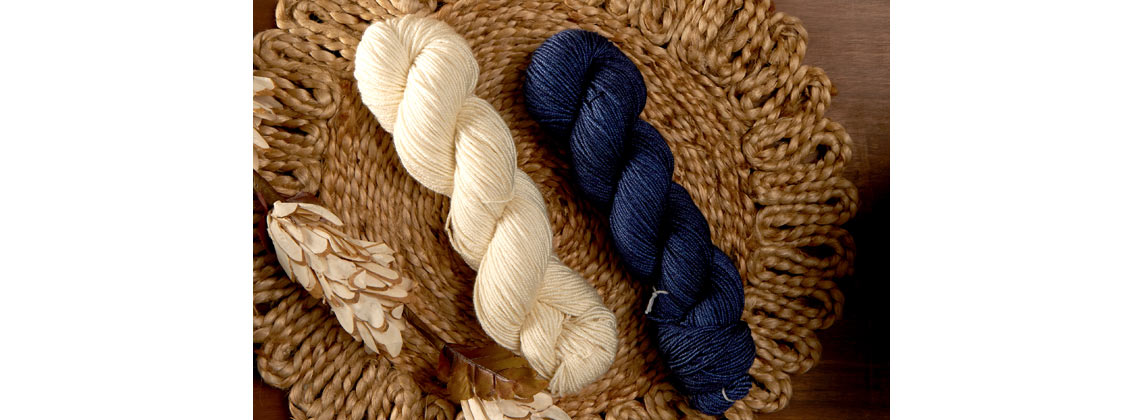
1. Weight Matters: Choose a Medium-Weight Yarn
- A medium-weight yarn (often labeled as worsted) is neither too thick nor too thin, making it easier to work with and see your stitches clearly.
- Make sure it matches the size of your crochet hook
2. Color Consideration: Opt for Light Shades
- Lighter shades, such as pastels or neutrals, enhance stitch visibility, enabling you to identify and learn from mistakes and better understand stitch patterns.
- It aids in building your confidence as you can visibly witness your progression and mastery over various stitches.
3. Fiber Content: Acrylic and Cotton are Your Friends
- Acrylic and Cotton-blend yarns are smooth, non-splitty, and easy to handle. They are also typically more affordable and available in a wide range of colors.
- Their durability and washability make them forgiving for practice and practical for beginner projects.
Taking up the reins - How to hold the yarn?
Holding yarn properly is crucial in crocheting to maintain even tension and create consistent stitches.
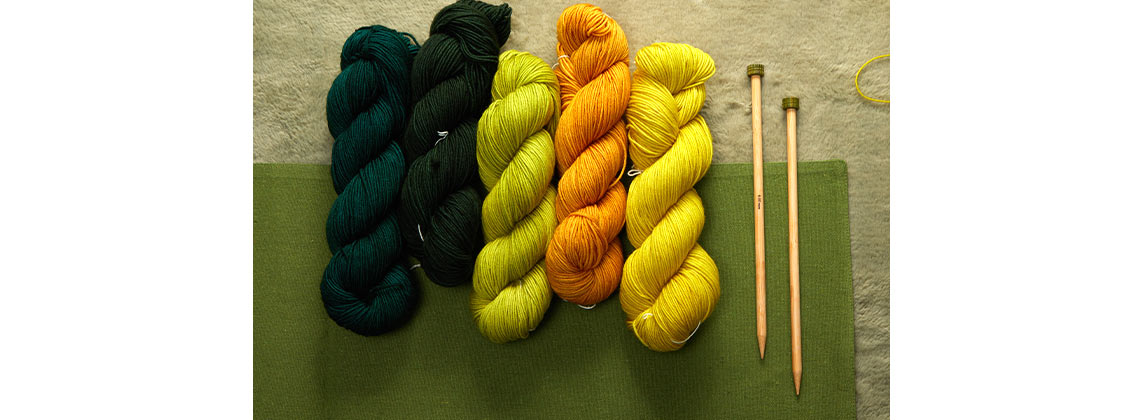
Step 1: Begin by threading the yarn between your non-dominant hand's little finger and ring finger (left hand for right-handed crocheters, and vice versa).
Step 2: Wrap the yarn once or twice around your little finger for tension. The yarn then goes over your ring finger, middle finger, and index finger. Your index finger will control yarn flow, your middle finger and thumb will hold the working piece, and the yarn feeds from your little finger to the crochet hook.
For a pencil grip yarn hold, let it simply lay across your palm for a gentler tension instead of wrapping it around your finger. Allow the yarn to lay over your index finger, under the middle, and over the ring finger, with or without wrapping around the pinky.
Comfort is the most important aspect when starting to crochet. Choose a method of holding the crochet hook and the yarn that feels good to you. It could be a slight variation of all methods mentioned above, too. Practice maintaining a consistent yarn flow and tension as you crochet during your first projects. Through the meanders of yarns and patterns, KnitPro stands as a reliable companion with a wide range of crochet hooks and accessories, making every stitch a step closer to your envisioned creation.


